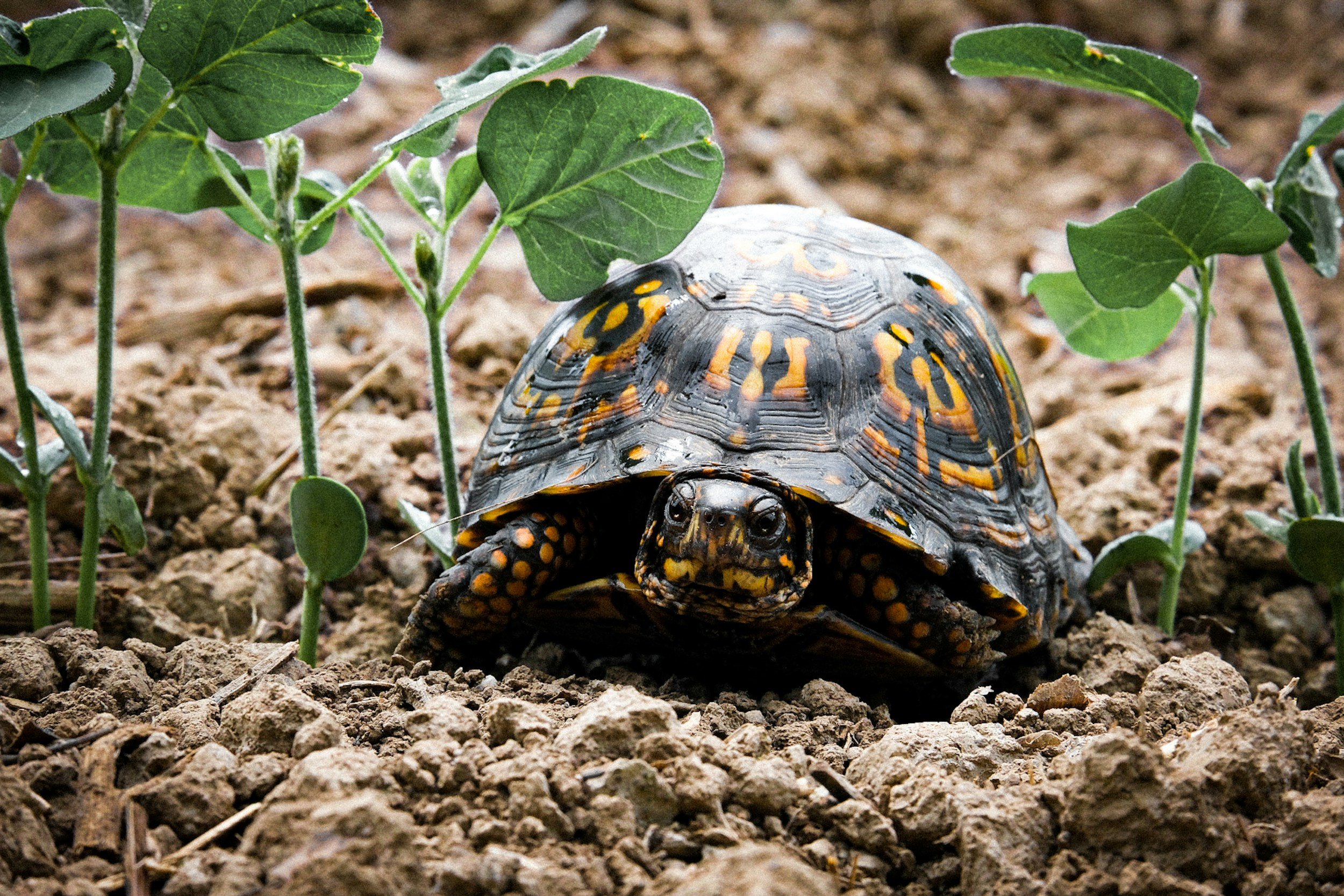
Helping Virginia’s Oldest Resident
Dinosaurs of the Woodlands
We can trace the lineage of box turtles back over 250 million years.
Their tough shells, slow metabolism, and adaptability make them little armored tanks of the forest.
However, their shells cannot protect them from the destruction of their habitat, road mortality, the illegal pet trade, or climate change.
Meet Oscar
Oscar was found at the bottom of a trash can, at a gas station off Interstate 95, in the City of Richmond, VA. Because Oscar has 3 legs, it is assumed that he was tossed by the poachers who were transporting him.
Oscar now lives at the Box Turtle Sanctuary, where he is back in his natural habitat.
Not all turtles are as fortunate as Oscar. Want to learn how you can help our local turtles? Click the button below.
Why Does Virginia Need a Box Turtle Sanctuary?
Eastern Box Turtles are among the most beautiful turtles in the world and were once common.
Habitat loss due to development and roadways has decimated many breeding populations. Poaching has become a major concern as Box Turtles are also highly praised as pets or consumed for their medicinal properties.
Unlike much wildlife that relocates when put in harm’s way, the Eastern Box Turtle does what it has done for millions of years. It closes its shell and waits for the danger to pass. This is no match for our modern, mechanized world.
Herpetologists began studying the effects of relocating and preserving the habitat of the Eastern Box Turtle around 1990. This reptile is native only to the Eastern United States and is difficult to relocate because of its homing instinct.
If relocated, the Eastern Box Turtle will try to find its way back to its hatching place, and the resulting danger of death due to lack of food and road crossings claims many turtles.
This is why we need the Box Turtle Sanctuary.
When their habitat is destroyed, so are the turtles.



